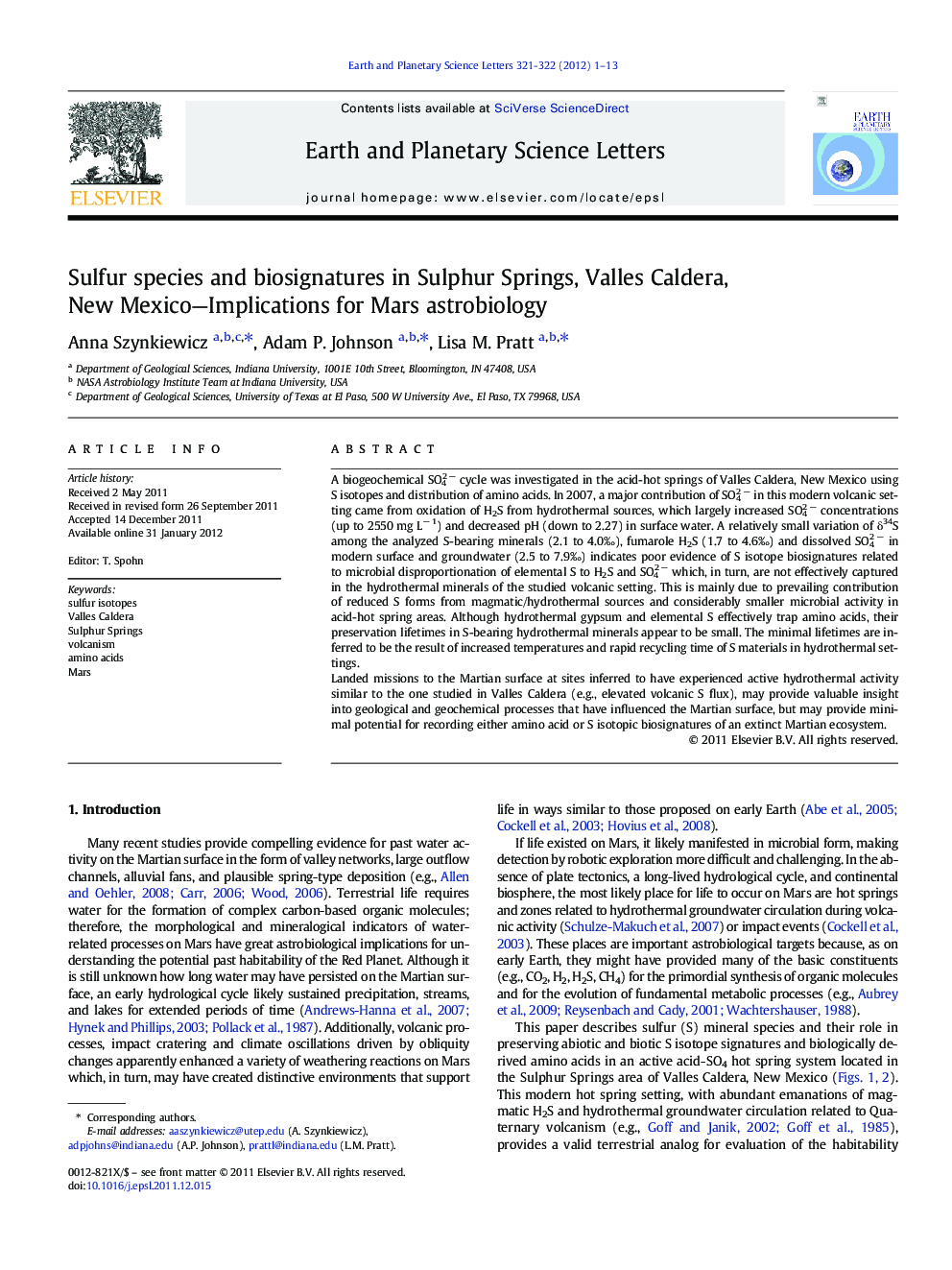| Article ID | Journal | Published Year | Pages | File Type |
|---|---|---|---|---|
| 4677579 | Earth and Planetary Science Letters | 2012 | 13 Pages |
A biogeochemical SO42 − cycle was investigated in the acid-hot springs of Valles Caldera, New Mexico using S isotopes and distribution of amino acids. In 2007, a major contribution of SO42 − in this modern volcanic setting came from oxidation of H2S from hydrothermal sources, which largely increased SO42 − concentrations (up to 2550 mg L− 1) and decreased pH (down to 2.27) in surface water. A relatively small variation of δ34S among the analyzed S-bearing minerals (2.1 to 4.0‰), fumarole H2S (1.7 to 4.6‰) and dissolved SO42 − in modern surface and groundwater (2.5 to 7.9‰) indicates poor evidence of S isotope biosignatures related to microbial disproportionation of elemental S to H2S and SO42 − which, in turn, are not effectively captured in the hydrothermal minerals of the studied volcanic setting. This is mainly due to prevailing contribution of reduced S forms from magmatic/hydrothermal sources and considerably smaller microbial activity in acid-hot spring areas. Although hydrothermal gypsum and elemental S effectively trap amino acids, their preservation lifetimes in S-bearing hydrothermal minerals appear to be small. The minimal lifetimes are inferred to be the result of increased temperatures and rapid recycling time of S materials in hydrothermal settings.Landed missions to the Martian surface at sites inferred to have experienced active hydrothermal activity similar to the one studied in Valles Caldera (e.g., elevated volcanic S flux), may provide valuable insight into geological and geochemical processes that have influenced the Martian surface, but may provide minimal potential for recording either amino acid or S isotopic biosignatures of an extinct Martian ecosystem.
► Hydrothermal settings minimize preservation of S isotope and amino acid biosignatures. ► Abiotic oxidation of magmatic H2S overprints the biotic S isotope fractionation. ► Amino acid decarboxylation and racemization rates are rapid in hydrothermal deposits. ► Martian hydrothermal sites may provide minimal preservation of similar biosignatures.
